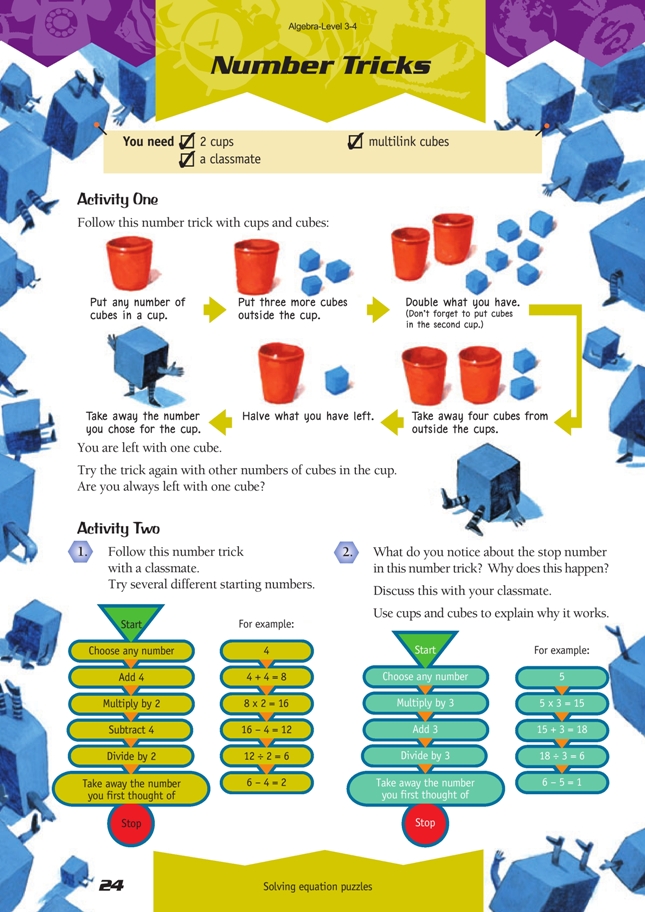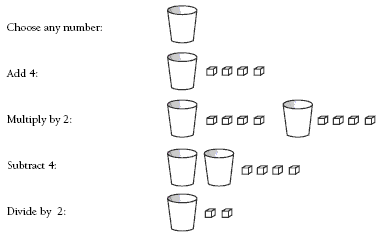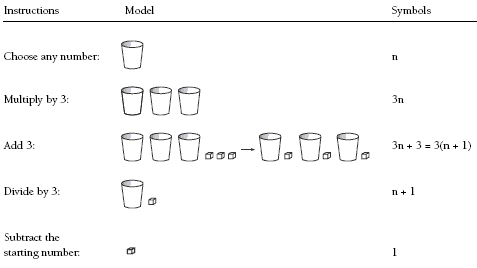This is a level 3 and 4 algebra strand activity from the Figure It Out series.
A PDF of the student activity is included.
Click on the image to enlarge it. Click again to close. Download PDF (256 KB)
explore equation puzzles (level 3)
use symbols to generalise the pattern (level 4)
FIO, Level 3-4, Algebra, Number Tricks, page 24
multilink cubes
classmate
Activities One and Two
“Choose any number” problems like these help to develop the students’ ideas about generalised properties of numbers and how these properties apply to variables rather than just to specific numbers.
Cups and cubes provide a useful model for these problems because they illustrate that the value of the starting number is insignificant. Consider Activity Two, question 1. On the left are the instructions, and on the right is the matching model.
Subtract the starting number:
Irrespective of how many cubes are placed in the cup at first, that is, the starting number, the result is always 2.
Some students may be able to grasp the use of algebraic symbols. Consider Activity Two, question 2:
See also the notes for Activity Two in Answers and Teachers’ Notes: Algebra, Figure It Out, Level 3, pages 33–34, which explain how puzzles like this work
Answers to Activities
Activity One
Practical activity. Yes, you are always left with one cube.
Activity Two
1. Practical activity. The stop number is always 2.
This happens because the middle section, number chosen x 2 – number chosen ÷ 2, done in this order, equals 2. The chosen number minus the chosen number equals 0. So you end up with 2.
2. Practical activity. This involves the 3 times table. After you have multiplied your number by 3, adding 3 to the answer will give you one more multiple of 3. So dividing this by 3 will always give you one more than the number you started with. For example, 5 x 3 + 3 = 18 is the same as 6 x 3 = 18. 18 ÷ 3 = 6, which is one
more than 5. This can be written as a rule: ([number x 3] + 3) ÷ 3 = 1.


